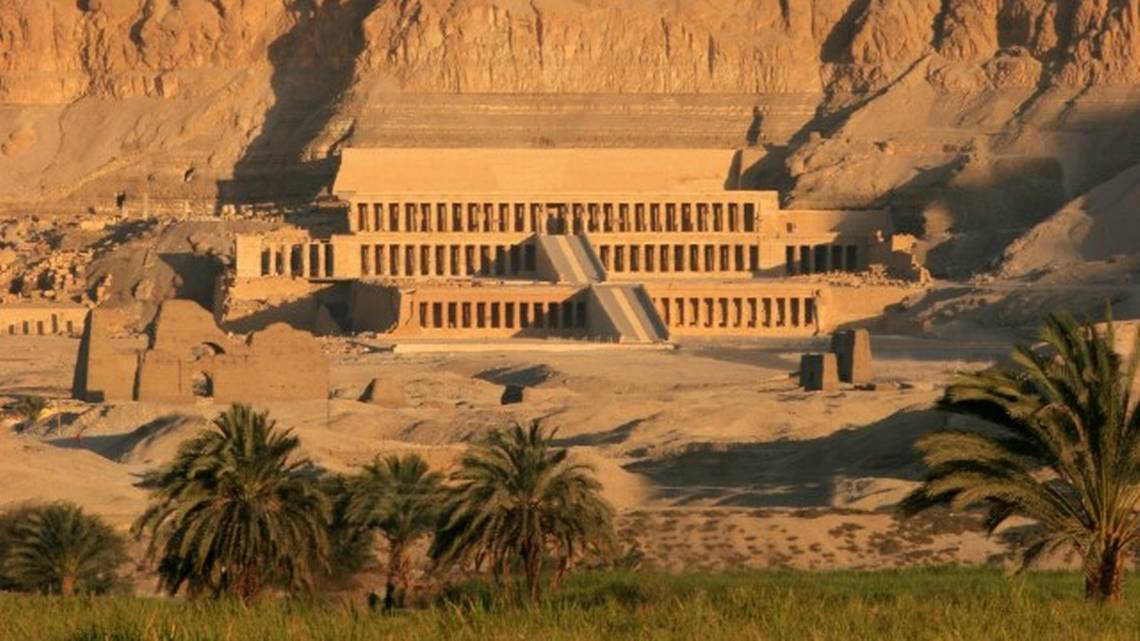The Temple of Hatshepsut, also known as Deir el-Bahari, is one of the most remarkable monuments of ancient Egypt. Located on the west bank of the Nile near Luxor, this mortuary temple was built for Queen Hatshepsut, one of Egypt’s few female pharaohs, who ruled during the 18th Dynasty (around 1479–1458 BCE.
The temple is renowned for its unique and innovative design, which blends seamlessly with the surrounding cliffs of Deir el-Bahari. It is a terraced structure, consisting of three levels connected by long ramps, which was a significant departure from traditional Egyptian temple designs
The temple was built as a mortuary temple for Hatshepsut, intended to honor her life and serve as a place of worship for Amun-Ra, the chief deity of Thebes. It was also used for her posthumous cult and as a symbol of her divine birth and right to rule.
The walls of the temple are adorned with detailed reliefs and inscriptions that depict significant events from Hatshepsut’s reign. These include her divine birth, her famous expedition to the Land of Punt (an ancient trading region), and her achievements as a ruler. Many of the reliefs emphasize her legitimacy as pharaoh, showing her relationship with the gods, particularly Amun-Ra, and highlighting her divine birth.
The Temple of Hatshepsut is part of the larger Theban Necropolis, which includes other important sites like the Valley of the Kings and the Temple of Karnak. Its location at Deir el-Bahari places it near the mortuary temples of other pharaohs, such as Mentuhotep II, whose temple influenced its design.

